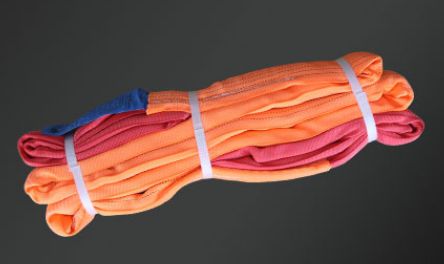Synthetic fiber belongs to a large category of raw materials for lifting belts. Synthetic fiber is a general term, which is also divided into polyester, polypropylene, nylon and other small categories. So the types of lifting belts are divided into many categories. So what should we choose when facing different types of lifting belts?

We take the three most common synthetic fibers as examples, polyester, polypropylene and nylon. Although the three materials are all synthetic fibers, their properties and characteristics still have some differences, and the purchase of lifting belts should be based on different operating environments.
First of all, let's learn about polyester, which has high strength and short fiber strength of 2. It has good elasticity, which is close to that of wool. When the elongation is 5%~6%, it can almost completely recover. Heat-resistant polyester is made by melt-spinning method, and the formed fiber can be heated and melted again, belonging to thermoplastic fiber. Good thermoplasticity and poor melting resistance.
Then there is polypropylene fiber. The longitudinal plane of the form polypropylene fiber is straight and smooth, the section is circular, and the strength and elongation of the polypropylene fiber are high, the elongation is high, the initial modulus is high, and the elasticity is good. Polypropylene fiber has poor dyeability and incomplete chromatogram, but it can be made up by using the original solution coloring method. Moreover, polypropylene fiber has good acid and alkali resistance.
Finally, nylon has excellent abrasion resistance, which is incomparable with many materials. The elasticity and elastic recovery of nylon are excellent. And it has good hygroscopicity.
These are the characteristics of the three most common lifting belt materials. Each material has certain advantages, and we can make corresponding choices according to different operating environments.